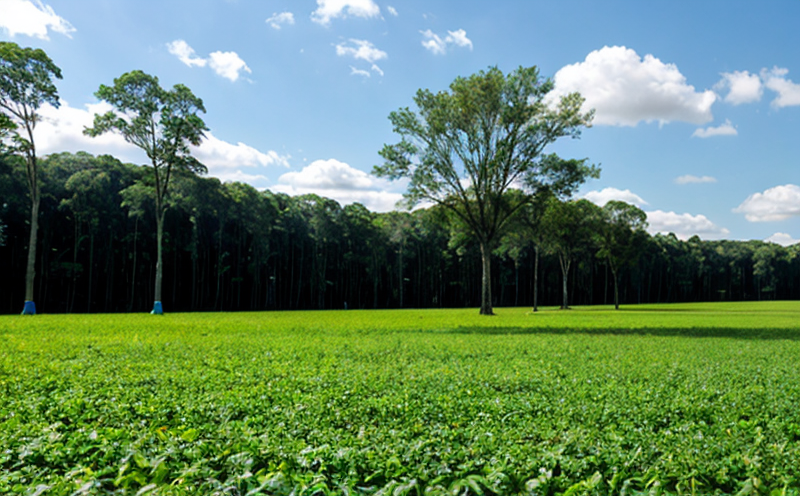Landfill Diversion Rate Verification in Packaging
The concept of landfill diversion rate verification is crucial for consumer products and product safety testing, especially within the framework of environmental sustainability. As global awareness grows about waste management and sustainable practices, companies are increasingly adopting methodologies to ensure that their products contribute positively to these goals. One such approach involves verifying the diversion rates of packaging materials from landfills through comprehensive testing.
Landfill diversion refers to the process by which waste is diverted from disposal in a landfill for recycling or other beneficial uses. This practice helps reduce environmental impact and supports sustainability initiatives. For packaging, this means ensuring that a significant portion of the material used can be recycled or composted rather than ending up in landfills. Testing these materials is essential to validate claims made by manufacturers about their product’s recyclability and environmental friendliness.
Consumer products often come with complex packaging layers designed to protect the contents while also being functional and attractive to consumers. These multi-layer structures present challenges when it comes to recycling because they require precise separation of different components before processing. Properly verifying the landfill diversion rate ensures that these materials are indeed handled appropriately throughout their lifecycle, from production to disposal.
Our service specializes in conducting rigorous tests that determine how much packaging waste can be diverted from landfills through proper recycling or composting processes. We use advanced analytical techniques and industry-standard methods approved by reputable bodies like ISO and ASTM to evaluate the composition of packaging materials and assess their recyclability potential accurately.
The testing process involves several key steps: specimen preparation, analysis using appropriate equipment, interpretation based on established criteria, and finally reporting the results in a clear format that can be easily understood by all stakeholders involved. By following this structured approach, we ensure high accuracy and reliability of our findings.
One important aspect of landfill diversion rate verification is understanding which parts of the packaging are suitable for recycling or composting separately. This requires detailed knowledge about raw materials used in manufacturing each layer of the packaging as well as how those layers interact during disposal processes. Our team has extensive experience working with various types of packaging, including plastic films, paperboard containers, glass bottles, metal cans, etc., allowing us to provide tailored solutions specific to your needs.
Another critical factor is ensuring that the tested samples accurately represent real-world conditions under which these packages will be used and disposed of. This includes considering factors such as temperature variations, humidity levels, exposure time to sunlight or rainwater, and other environmental stressors that could affect material degradation rates. By simulating these scenarios during testing, we can better predict actual performance in practical applications.
Finally, it's essential to note that landfill diversion rate verification isn't just about identifying recyclable components; it also involves evaluating the overall effectiveness of recycling programs for different types of packaging materials. This helps manufacturers make informed decisions regarding material selection and design changes aimed at enhancing sustainability efforts further down the line.
In conclusion, verifying landfill diversion rates in packaging is a vital step towards achieving greater environmental responsibility within the consumer products industry. Through our comprehensive testing services backed by robust methodologies and experienced professionals, we help businesses meet regulatory requirements while contributing positively to global sustainability goals. Whether you're an R&D engineer looking for innovative ways to improve your product's recyclability or a compliance officer seeking assurance that all claims regarding waste management practices are accurate, our landfill diversion rate verification service provides the expertise needed to succeed.
Applied Standards
The landfill diversion rate verification process adheres closely to several internationally recognized standards designed to ensure consistency and reliability across different laboratories. Some key standards include:
- ISO 14075-3: Waste management – Determination of recyclability – Part 3: Calculation methods: This standard provides guidance on calculating the percentage of waste that can be recycled or composted, taking into account various factors such as material type, processing conditions, and end-market requirements.
- ASTM D7812-09: Standard Test Method for Determining Recyclability of Postconsumer Packaging Waste: This method specifies procedures for assessing the recyclability potential of post-consumer packaging waste, including sample preparation, sorting protocols, and calculation methods.
- EN 13435-1: Environmental Claim Validation & Verification (ECV&V) – Part 1: General Principles: This European standard outlines the principles for validating environmental claims made by manufacturers regarding their products' recyclability or other sustainability attributes, ensuring transparency and accuracy.
- IEC 62471-1: Environmental Management – Requirements for Environmental Claim Validation and Verification (ECV&V) – Part 1: General Principles: Similar to EN 13435-1 but applicable globally, this standard sets out the requirements for validating environmental claims related to products' entire lifecycle, including resource efficiency, energy consumption, and waste reduction.
These standards provide a framework for conducting landfill diversion rate verification tests accurately and consistently. By adhering strictly to these guidelines, our laboratory ensures that all results are reliable, reproducible, and comparable with those from other reputable laboratories worldwide.
Why Choose This Test
Selecting the right testing method for landfill diversion rate verification is crucial for manufacturers committed to sustainability. Here’s why choosing this particular test offers numerous benefits:
Regulatory Compliance: Many regions have stringent regulations requiring businesses to demonstrate compliance with specific landfill diversion targets. By obtaining verifiable data from our tests, companies can ensure they meet these legal requirements without any ambiguity.
Reputation Building: Demonstrating a strong commitment to environmental responsibility not only helps satisfy regulatory obligations but also enhances brand reputation among environmentally conscious consumers. Consumers increasingly seek out brands that prioritize sustainability, making this type of verification an effective marketing tool.
Innovation Opportunities
yanswer




